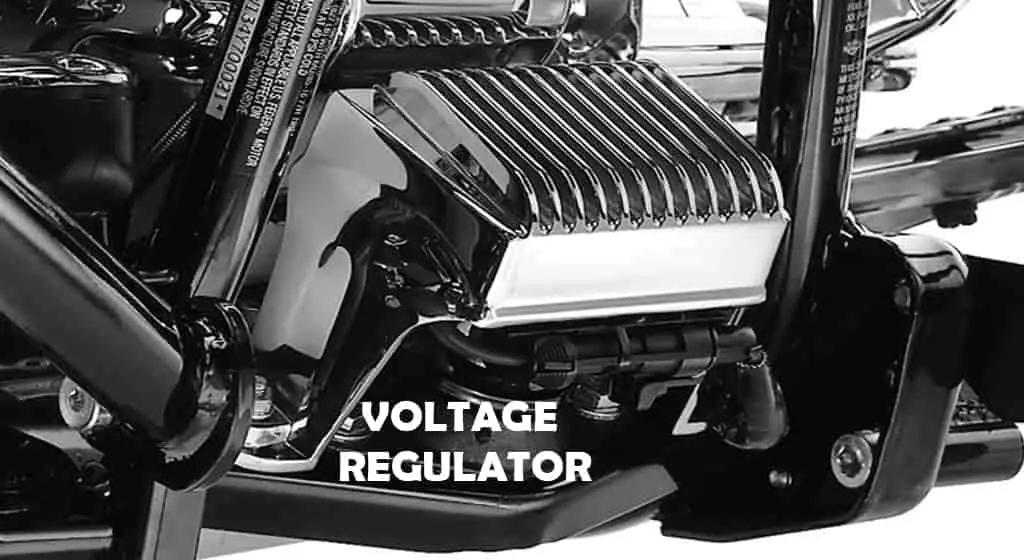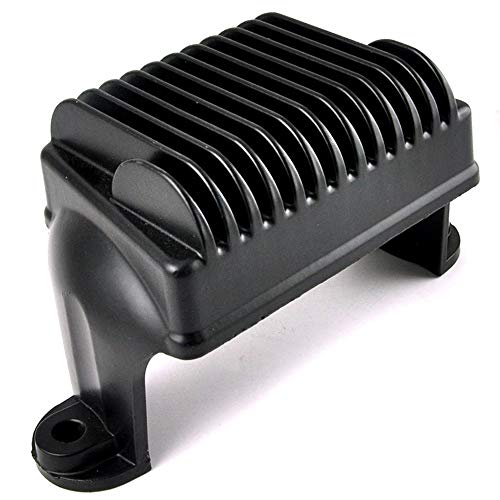Let us discuss all the problems and solutions of voltage regulator that may come into contact with the front fender. The engine of a vehicle contains a lot of power, which enables it to perform. It is the fuel and the battery that provide the energy that the engine of the car needs to run. Voltage regulators protect your car’s electrical systems from raw currents, which could fry some electrical systems. As a result, it prevents critical systems from being damaged by this raw electrical power.
It is a type of electrical appliance that consists of a set of circuits designed to deliver a constant voltage to the output terminals of an electrical appliance irrespective of the changes in the voltage at the input or supply terminals of the Harley Davidson bikes. This is without a doubt a beneficial solution to protect equipment and machines from overvoltage, under voltage, and other voltage surges.
Voltage Regulators in Harley
A permanent magnet AC generator is usually installed in motorcycles in order to provide them with power. It is not uncommon for these generators to produce voltage at a certain magnitude depending on the speed at which the engine is running.

This type of generator, in spite of the fact that it is specifically designed to produce a high amount of engine power, requires a voltage regulator in order to maintain the proper voltage for charging batteries and for the electrical system even though it is specifically designed for that purpose.
As a result, these generators can be wound in either three-phase or single-phase configurations. As the voltage regulator unit has two parts, regardless of whether there is a single-phase or a three phase winding, it has two main components, namely:
- the section for rectifying current and
- the section for regulating voltage.
All Harley Davidson motorcycles employ a method of controlling the output voltage of the car’s alternator. The work can typically be carried out by an external electromechanical device, but in recent cars, AI-based software has been implemented.
Components of the voltage regulator
Some of the basic components of voltage regulators are mentioned below:-
The Stator: The stator is one of the primary components of the voltage regulator. This stator is composed of a laminated core and three sets of stationary coil windings.
The Rotor: A field coil is a coil of wire that lies between two magnetic poles on the rotor, which is the rotating portion of the alternator.
The Bridge: Electrical check valves are built into the rectifier bridge by using diodes.
Workflow of the Voltage Regulator
A pulley is located at the front of the alternator that is geared to the drive belt of the vehicle, which is responsible for turning the rotor when the engine is running. By turning the rotor, an alternating current is produced in the stator, which causes the rotor to spin.
A rectifier bridge is a device that converts the Alternating Current (AC) from the electrical system of the car into Direct Current (DC) that the electrical system is able to use. By controlling the current flowing through the field coil, the regulator regulates the amount of voltage that is generated by the alternator by regulating the amount of current flowing through it.
It is, however, important that the alternator produces enough voltage so that the battery can be charged properly, but not so much voltage that the car’s electronics are damaged as a result of the voltage. This is why a voltage regulator is included as part of the charging system.
Modern Harley Davidson bike is very likely to have a regulator that controls the alternator’s output either electronically, by using a computer to control the excess voltage, or a combination of both. It is not necessary for a separate voltage regulator to be used when a computer is used, since the electronics of the voltage regulator are integrated into the engine computer.
- ★ Replaces Harley Davidson voltage regulator Part Numbers: 74505-09,...
- ★ NEW Premium Quality Harley Davidson Replacement Voltage...
- ★ Computer tested for consistent Quality and Rugged Reliability,2011...
- ★ MZS Voltage Rectifier Regulator use high quality aluminum , highest...
- ★ Satisfactory service, if you have any questions, please feel free to...
Symptoms of a faulty voltage regulator
Below mentioned some common causes of faulty voltage regulators of Harley Davidson Bikes:
Lag in performance of the Harley Davidson:
When a voltage regulator malfunctions, some components may not be able to function normally. There are many components in a vehicle that require a minimum voltage to function properly such as the fuel pump, the ignition system, and other parts which may not function properly by having a bad regulator.
It might not seem like a big deal, but it is a big deal because it shows that things are not being handled properly in terms of the regulation of power.
Malfunctioning of the rear and front lights
In the case of a low charging system output caused by the regulator, you may begin to notice the headlights and other lighting to get weaker and flicker. The regulator can, on the other hand, because a higher output than usual, which can result in premature bulb failures if the output is higher than normal.
You may also notice that the lighting on your vehicle appears brighter than usual. There can be a variety of causes for this, including anything related to the charging system or even the actual headlights themselves, but this at least narrows down the possibilities.
Issues with the Battery of the Harley Davidson
There is a chance that a bad voltage regulator will result in the alternator undercharging the battery on the car or overcharging it. When the battery is undercharged, it is more likely to discharge or go dead, while when the battery is overcharged, it can be damaged internally.
Solution of a faulty voltage regulator
- First, make sure the fuel gauge and speedometer are functioning properly. Then check the connection of your voltage regulator whether these components are in a good and ideal location. In case everything is good, swapping out the regulator can fix the error.
- Ensure that your vehicle’s electrical system is working properly. Furthermore, if your lights work with a different voltage regulator, then the voltage regulator must be replaced if there is an issue with it.
- Ensure the wires were properly connected, and if the problem is caused by the regulator, consider replacing it.
- If the problem is with your battery then it is advisable to replace both the voltage regulator and the battery too.


